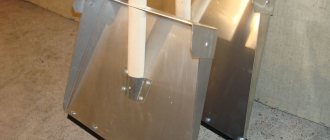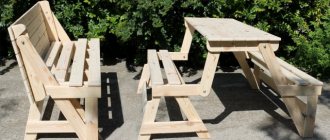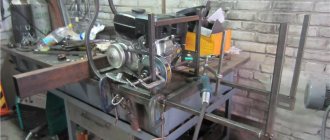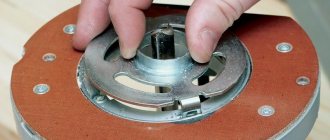All-terrain velomobile and features of its creation
When making a velomobile, it is important to take into account many details
- How the vehicle will be used;
- How many speeds does the owner of an unusual vehicle need?
- What will be the design of the structure;
- Quality and quantity of fasteners.
For those who plan to get the most out of their new iron friend, you need to think about whether the wheels or tires have good rubber. After all, for those who are going to spend a lot of time at any time of the year on a velomobile, cross-country ability is important. To do this, instead of regular tires, you can use larger tires with a larger diameter.
And also, for higher cross-country ability, vehicles are included in the design instead of the usual three wheels, four. Seat height can also affect cross-country ability because the higher the seat, the safer the passenger is, protected from the influences of the sidewalk, ground and other surfaces.
A velomobile can become a necessary and reliable form of transport, the main thing is to make it with passion, strictly following the instructions and drawings. Let the velomobile become a faithful companion, giving bright emotions and a great mood.
TALLEST BIKE
Welder from Cuba Felix Guirolla created a bicycle with a height of 5.4 m. The model was called TALLEST BIKE and it is the tallest in the world. The design of this bicycle is such that in order to start moving or get down after stopping, the cyclist needs help.
So, during the test run he was helped by three assistants at once. This inconvenience does not frighten the Cuban inventor, and he plans to create a model of a bicycle 12 meters high.
Do-it-yourself single-seater velomobile
Velomobile made from an old bicycle
To implement this idea you will need:
- bike;
- 2 meters of steel pipe with a diameter of 2.5 cm;
- 6 meters of profile pipe with a cross section of 3.8 * 3.8 cm;
- profile pipe with a cross section of 2.5*2.5 cm (about 3.5 m);
- profile pipe with a cross section of 1.3*1.3 cm (about 1.5 m);
- steel plate 0.47 cm thick;
- Chipboard, foam rubber, seat upholstery;
- bolts, nuts, seat upholstery, primer.
The frame of the velomobile is made of profile pipes
Such a velomobile, of course, looks powerful, but you have to pay for it with the lightness of the design. There will be an opportunity to pump up your legs well. In addition, there are suspicions that the main load will fall on the weld, which is located closer to the steering wheel. All this will lead to the fact that one day the frame will not hold up and burst at the seam.
It is worth noting that the idea with the front drive wheel was implemented well
Please note that the drive sprocket, which was previously located at the rear, now needs to be turned over. We also turn the switch upside down and install it further 5.7 cm and 0.15 cm higher
The bracket on which everything will rest is made of a steel plate.
For the speed derailleur to work correctly, it must be installed upside down
The hardest part is over. If you get this done, there shouldn't be any problems with the rear of the velomobile.
The velomobile can now stand on its own wheels
As you noticed, you will need a third wheel. You can carefully take it from a neighbor while he is resting after a heavy lunch, but it is better not to risk it and warn him in advance. Many will be glad to get rid of junk.
We make the rear wheel mounts from a steel plate
Next we should move on to the brakes. Of course, “what Russian doesn’t like driving fast.” Besides, everyone has long known that brakes were invented by cowards. But let's think about those around us. Can you imagine what will happen to a person when such a machine hits him? So, brakes. We simply transfer them from the remains of our old bicycle. We weld the brake caliper to the new front fork and transfer the brake mechanism to it.
Weld the brake caliper to the front fork
We make the frame of the future seat from a metal profile.
Three sections connected by bolts will allow us to adjust the seat back and headrest
The base of the seat and back are made of chipboard and foam rubber. We choose the softness ourselves, as well as the upholstery.
Once you've finished celebrating the completion of the work, be sure to test drive the velomobile
Test drive of a single-seat velomobile - video
Advantages of this design:
- convenience and safety compared to a bicycle;
- uniqueness;
- several speed modes.
- cumbersome design;
- brakes from a regular bicycle will not stop such a heavy structure;
- a miscalculation in the frame design, due to which the weld may fail.
GRASSHOPPER
The German company HP Velotechnik presented the GRASSHOPPER bicycle model (translated as grasshopper). The peculiarity of such a bicycle is that in just 1 minute it can be folded to dimensions: 90X60X70 cm. The possibility of such actions is due to the design features of the frame of such a bicycle. It is made of rigid aluminum, and consists of several parts that are securely held together by integrated bolts. The ergonomic saddle of this bike is made of fiberglass. In it, the cyclist sits reclining, rather than sitting, as usual.
To increase aerodynamic properties, the GRASSHOPPER developers positioned the pedals slightly higher than the seat.
At first glance, such a cyclist is quite unstable, but the developers claim that this is a myth. GRASSHOPPER is easy to operate and allows the driver to quickly adapt to the unusual design. In addition, this model, in addition to the cyclist himself, can carry up to 50 kg of cargo.
Manufacturing instructions
Master class on how to make a tricycle step by step:
- The donor model is placed on the platform with the steering wheel down.
- Remove the wheels, remove rust and other defects in visible places.
- Saw off the rear part of the unit with a grinder.
- The differential is fixed using metal clamps.
- The bridge is installed at 90 degrees using the above method.
- The remaining auxiliary elements are secured by welding.
- The wings are mounted, between which a basket of suitable size is welded.
- Install two rear rims in parallel.
- The fasteners of the clamps are tightened.
- One is made from two circuits and then installed.
- Equip the brake unit using disc parts and a switch on the steering wheel.
- They check the build quality and paint the model.
Homemade tricycles may vary in size depending on the user's creative ideas. A proven, fast and reliable method in terms of technology is the use of a UK-65 type rear differential axle. When creating a drawing of a homemade tricycle, you should take into account the costs of consumables.
When creating the modification in question, you will need to take into account the costs of purchasing the necessary parts yourself. In addition to the bridge, you will need a chain, a speed switch, wheels, and a set of sprockets. Also, we must not forget about lubricating and painting sanded and welded surfaces.
Bridge installation
The assembly procedure for this element is not particularly difficult, since it fits almost all classic frames. The work is performed in the following sequence:
- First, all the stock rear end components are removed, including the stock chain, wheel, fender, rack, and hand brakes.
- Then the UK type axle is installed on the original rear wheel seat. In this case, the stops are placed on the lower tube of the rear part of the frame, the axle is threaded through the eyes. All parts are tightened, the stops are attracted using clamps.
- Next, a new chain is installed, which is longer than the usual analogue. To make it, you need to buy two standard chains and adjust the element to the required dimensions. To remove excess links, use the method of grinding off the rivet or installing a new lock.
- All that remains is to configure the speed switch.
As you can see, tricycles by hand are not such an impossible task.
Making a velomobile at home
Nowadays, everything can be bought, and a four-wheel velomobile is no exception. But its cost is more than high, and it does not always reflect your needs or desires. Therefore, you can try to make such an interesting and not so familiar vehicle yourself.
Best articles: How to make a bicycle stand with your own hands
Drawing of a simple velomobile here
The algorithm of actions is as follows.
Manufacturing should begin with the frame - this is the basis of the entire structure. It is better to create it in a 3D editor, but you can do everything by hand. The main thing is to think through everything to the smallest detail so that you know exactly where to cut and where to weld. When designing the frame and all other structural elements, important points should be taken into account: the height of the rider, the required space, the size of the wheels
It is also important to consider the mass and resistance of the materials from which this specimen will be made.
What the velomobile will be like depends on you.
Chain tension level
The velomobile is ready to use
As you can see, making a velomobile with your own hands using drawings for a model with four wheels is not so difficult. So, with a little effort and imagination, you can build a faithful assistant not only for the child, but for all family members. The main thing is not to forget that you can do anything. You will find more inspiration and practical advice in the video.
What will you have to spend on?
When creating the modification in question yourself, you will need to take into account the costs of purchasing the necessary parts. In specialized stores you can easily find the necessary material. The main part that allows you to transform a two-wheeled bicycle into an analogue with three levels is the UK-6S bridge (or its equivalent). The average cost of a part is about 25 thousand rubles. In addition, you will have to buy an additional chain, gear selector, wheels and a set of sprockets.
As a result, the future owner will be able to independently design the model without significant financial costs, as well as choose an individual external design that will give the bike originality. If the work is carried out correctly, the equipment will delight the user not only with comfort, but also with reliability.
Adult four wheel bike
A Swiss engineer named Mikael Kjellman wanted a bike that was weatherproof and also more comfortable than regular adult bikes.
So he created his four-wheeled prototype, the PodRide, a fun and practical car-bike. When you see this invention in action, we guarantee you will be amazed.
The device has four wheels, a short turning radius and the ability to go up to 24 kilometers per hour.
This PodRide is a combination of a small adult car and a bicycle, it is tiny (weighs less than 70kg) and is the same height as a car. There's even storage space and the ability to hitch a trailer in the back.
The PodRide is so narrow that it can fit on bike paths, and in Switzerland it is classified as an e-bike (meaning you don't need any special license or insurance).
On warm sunny days, the windshield and sides are open for easy use. A vehicle with comfortable seats for the driver.
Since Mikael uploaded the video to YouTube in April, he's had plenty of comments from strangers saying they wouldn't hesitate to buy one for themselves.
Let's leave this video:
PIBAL
French automaker Pegeot and renowned designer Phillipe Starck have joined forces to release the eco-friendly PIBAL model, which combines a bicycle and a scooter. This is very convenient, because for long journeys you can use PIBAL like a bicycle, and for short journeys and maneuvering on city streets - like a scooter.
The aluminum-lithium alloy used to make the body makes the PIBAL very light. The wheels of the model are bright yellow and made with the addition of a luminescent component, which makes it visible on the road even in the dark.
DIY velomobile made from a bicycle. Step-by-step instruction
Thanks to modern technology, there are many options on the market. Bicycles, velomobiles, motorcycles and many other vehicles for entertainment and sports. Is there an old bicycle in the storage room or attic of the cottage that no one uses anymore?
A four-wheeled bicycle is not only a means of teaching children to ride, but also a full-fledged vehicle for adults. Let's find out a little more about him.
Four-wheeled versions appeared almost immediately after the invention of the bicycle. There are known drawings from the mid-19th century, where engineers tried to combine carriage technologies with pedal drive. It is interesting to note that half a century later, the first cars also had their own “bicycle” versions, with one or two pairs of pedals.
Later, in Soviet times, the features of mass production excluded various non-standard layouts of bikes, and for us the hero of the article, along with a tricycle, became exclusively a bike for small children and students.
SAWYER
Dutch designer Casper Junger came up with a bicycle model that will be especially interesting for its owner. He developed the SAWYER bike, the distinctive feature of which is that before riding it, the cyclist is required to assemble it himself. The designer used strong beech plywood as the main material. All elements are arranged on a separate strip; they need to be disconnected and attached to the base, following the instructions that come with the product.
Standard velomobile option
Velomobiles, like other types of entertainment and sports transport, can be different in their structure and capabilities. But, despite this, there is still a standard for the external and functional content of this type of transport.
A velomobile, in its usual form, includes:
- A three-wheel design in which the front wheel is slightly larger than the two rear wheels;
- Steering wheel;
- Front frame;
- Connecting elements;
- Sitting.
Naturally, standardity is an opportunity to add color and add notes. After all, if a person converting an ordinary bicycle into a velomobile has taken on such an interesting mission, it means that his imagination is sufficiently developed and will help him make a special design.
A velomobile is not only a means of transportation and a way to pass the time profitably, it is also an opportunity to stand out from the crowd and show that the owner of the vehicle is special. Thanks to creative and unusual solutions, be it decor or a structural part of a velomobile, every craftsman can make the fruit of his efforts especially interesting.
LONGEST BICYCL
The creators of the world's longest bicycle were a group of developers from Holland, Mijl Van MaresWerkploeg. The model was called LONGEST BICYCLE, and its length is 35.79 m, which exceeds the length of the longest car in the world. The bicycle consists of aluminum structural elements, which, as a rule, are used to install lighting equipment during concerts and other public events.
Regarding the wheels, we inform you that the front wheel is used from a motorcycle, and the rear wheel is much wider and shaped like a roller, which ensures greater stability of the entire structure while driving.
The LONGEST BICYCLE must be operated by 2 people at once, who are located at the beginning and at the end of the structure.
Advantages and disadvantages
Four-wheeled bicycles are not so popular that it’s so easy to visit their owners and ask about the pros and cons of the design. Let's look at the key factors that influence the transition to a “four-wheeled friend.” Pros:
- The most stability of any bike currently available.
- Convenient location of the rider.
- Large load capacity and loading volume.
- Interesting and unusual design.
Top articles: Convertible bicycles
The disadvantages are also obvious:
- Complexity of design - a velomobile is difficult to assemble on your own and not easy to repair.
- Less reliability - 4 wheels, a complex drive mechanism, additional steering elements, many welded joints - units that can break and are subject to increased load much more than in a regular bike. Accordingly, the chance of failure is much higher.
- High price - few people will decide to buy a ready-made trike or velomobile - the cost is high, and there is practically no mass production. Do-it-yourself manufacturing will spend a lot of time and money on non-standard custom parts.
- Dimensions - it is difficult to put such a bike on a balcony or carry it up a mountain - you will have to work with the transport as with a full-fledged car.
How to make a velomobile. Step-by-step instruction
In order to get started, you need to stock up on some available supplies and tools.
Would need:
- Bulgarian;
- Soldering iron;
- Fastening elements (bolts, screws, nuts);
- Hammer;
- Pliers;
- Pipes of different diameters;
- The material with which the finished product is planned to be upholstered.
- In general, a little patience, and the dream will come true.
Step 1: Front Wheel and Steering
In order to start the procedure, you must:
- Using a grinder, cut off all unnecessary elements from the front wheel;
- Leave a piece of frame in a V shape;
- Cut the protruding part of the frame approximately in the middle with a grinder and bend it towards the central part of the structure;
- The wheels are attached directly to the wheel in the middle;
- The bent frame must be firmly secured near the steering neck.
- When the steering is ready, you can proceed to the next steps of building a velomobile.
Step 2: Main Frame
To implement the main frame project, you will need separate pipes of different diameters or parts from a former bicycle.
All pipes must be cut using a grinder into pieces approximately 10 centimeters in size. You should cut at an angle of one hundred and twenty degrees so that the final shape of the structure is correct.
Step 3: Front Fork
When equipping the front fork, a steel element is welded onto the steering column, onto which the frame and moving parts of the velomobile will be attached.
Connectors are drilled into the pipes attached to the steering column, with the help of which the structure will fit tightly. Such structures should be placed on both sides of the wheel so that control is as coordinated and safe as possible.
Step 4: Rear Frame
To implement the manufacture of the rear frame you will need:
- Bulgarian;
- Welding device;
- Four pipes of the same size;
- Two pipes are several centimeters smaller than the main ones;
- Fasteners.
It is quite simple to implement this design. It is necessary to connect four structural elements together. Those parts that are shorter in length are soldered on both sides of the square frame structure, parallel to each other.
A protruding fastener with a connector in the middle is soldered to the sides. These fasteners are then attached to the rear wheels.
Step 5: Brakes
This part of the velomobile is perhaps one of the most significant. A velomobile without brakes is the same as a car or motorcycle without an adjustable device. In general, the detail is very important, so you need to approach the installation with full responsibility.
Two aluminum plates are soldered to the brake “horseshoe”, in which holes are pre-drilled. Once the structure is ready, it is attached to the front frame to the forks.
Step 6: Gear Shifter
Just like in a regular bicycle, speed transfers take place in a velomobile. Naturally, this design, due to its wide functional range, can be simple, but sometimes very functional. In order to make a mount for speed gears, you will need:
- two identical aluminum plates that are welded together and form a single structure;
- fastenings and elements such as bolts, nuts and holders are also required.
Step 7: Seat Adjustment
In order to organize a comfortable “seat”, you need to prepare:
- Square-shaped pieces of metal structures that will serve as the base;
- Bolts, cogs, nuts;
- Bulgarian;
- Drill;
- Chipboard base;
- Upholstery material (this can be thick fabric, leather, material for car seat upholstery).
Step 8: Test Drive
And now the long-awaited moment has come, the scheme has been completed in full, all the blanks have formed an independent, full-fledged product. Now it’s time to conduct a stress test on the vehicle, into the design of which a lot of soul and effort was put.
A test drive of a finished velomobile can be carried out in several ways:
Without leaving the place of manufacture, check all the moving parts of the velomobile to make sure they are in good condition; Drive the vehicle in a safe area, where nothing and no one will prevent you from fully experimenting with the capabilities of your “brainchild”. Entrust the vehicle inspection to professional testers who know exactly what to look for.
DIY tricycle
Measurements and calculations
Drawing with calculations for designing a cargo bike
First, you need to calculate the details and take measurements that will be needed for the design.
- A prerequisite is sustainability. The bicycle should not fall or fall to one side during sharp turns of the steering wheel.
- The height of the bike and seat should be calculated in such a way that it is comfortable for you to get on and off.
- It is better to purchase high-quality and new pedals and wheels. Be sure to take care of the bell and brakes.
- Everything should work quietly and smoothly. Squeaks are extremely undesirable; you need to think about high-quality lubrication of parts at the first stage.
- Strengthen the frame. Using reinforcement and profiles, strengthen the metal frame of the frame, as the load on it will increase significantly.
To make a cargo tricycle with your own hands, we will need an old bicycle, a metal profile, a pair of wheels and, if desired, a differential. Let's cut the fork a little lower than the seat (20 centimeters) and weld a pre-made frame from metal profiles. We remember the permissible width so that we don’t have problems with the traffic police later.
We fasten the wheels with an axle and place a sprocket in the center of the axle.
Factory bridge installation
It's great if your cargo bike comes with a factory differential, then assembly won't be a problem at all. All you need to do is remove all the rear parts (brakes, chain, rack, etc.).
- The differential (eg UK6S) is installed in the factory rear wheel seat. We bring the axle stops to the rear of the frame, and install the axle in the lugs and tighten them well.
- After mounting the rear axle, be sure to align it at a right angle to the frame. The rear axle should be parallel to the front.
- Now we need a chain. It will be much longer than on standard models. To do this, we buy two chains and adjust them to the length we need.
- Now all that remains is to configure the gear selector.
- Disc brakes are installed on the rear axle. Congratulations! Your homemade cargo tricycle is ready for use.
The design of the cart, its height, canopy, and mesh sides are limited only by your imagination. There are many models with removable top parts, which makes the cart even more functional. Such three-wheeled homemade products in the “vintage” style can often be found in cafes and restaurants.
Let's get started
Step-by-step instruction:
- An additional steering column bracket is added to the rear bike.
- In the front bike, you need to strengthen the trunk and install a cross-shaped tube (hinge) on it:
- We weld a support to the trunk.
- We screw a king pin to the welded support (you can make a king pin from an old front fork rod from a bicycle used for conversion).
- We put the hinge on the already screwed pin.
The advantage of such a semi-tandem is quick and easy assembly - the frames are not sawed, the chains on each bicycle remain separate. If necessary, such a tandem is very easy to divide again into two separate bicycles.
Design Features
Some components are completely indistinguishable from other adult bikes. For example, the wheels and braking system - the maximum that changes is the number of driven calipers or frames from one cable - there are two of them. Most often, the brakes remain only on the rear wheels and are no different either.
The drive rarely changes, these are pedals and a chain, often one, but sometimes two speed switches. The force is applied to the rear wheel shaft, which is already a difference.
The frame and steering wheel are seriously changing. It is clear that the frame is made for a specific model, taking into account many parameters. Some homemade products consist of two ordinary bicycle frames, welded by intersecting pipes, on which a seat is attached and the transmission is mounted.
Very often a bicycle with 4 wheels is a two-seater. The width of the intersecting pipes is sufficient to accommodate two chairs at once. In this case, the drive mechanism can be different - either a common shaft with two pedal blocks, then united by one chain, or separate drives for each rider. There are even simpler mechanisms - when only one person turns the pedals, and the other simply remains a passenger.
BANANA HAMA 17
Developer Brent Ingrim combines the comfort and convenience of a hammock with the pleasure of cycling. To this end, he created a model where, instead of a traditional frame with a seat, a banana-shaped frame is used, on which the seat is conveniently attached. By the way, it was the shape of the frame that prompted the creator to name his bike BANANA HAMA.
BANANA HAMA has 17 gears, and the steering wheel with fairly long handles has the same shape as the steering wheel of a chopper.
Benefits of using a tricycle for adults
Most often, this type of transport is used for elderly people or for those who cannot properly maintain their balance while driving.
The tricycle has the following advantages:
- this type of device is suitable for absolutely any person, regardless of age;
- the cost of the device is affordable;
- each person can independently make this type of device, without the need to spend a large amount of money or have special skills;
- the bike is stable while riding, regardless of the type of road;
- can be used for transporting goods;
- considered safer than a two-wheeled device;
- The low frame is suitable for people of all ages.
Devices can be of different models. Some models have special passenger seats and trunks for carrying cargo.
BENDY BICYCLE
British designer Kevin Scott proposed an alternative idea that allows you to protect your bike from theft. Here, instead of anti-theft devices of various designs, the creator suggests using the bicycle itself as a lock.
To prevent it from being stolen, the author proposed a flexible frame design, which allows you to bend the bicycle in the chosen parking place and fasten the frame to the saddle using a lock built into the structure. This model is called BENDY BICYCLE, it is optimally suited not for mountain bikes, but for pleasure bikes.
Use of velomobiles
Bicycle structures with 4 wheels have a separate name - velomobile. Who might need such an exotic thing? Let's take a closer look:
- Elderly people - the velomobile does not require maintaining balance, it can stop at any time, which, without a doubt, will be very popular with the elderly and the sick.
- Couples – if a tandem can be called “sports equipment”, then on four wheels and with two chairs you can relax, as many of us relax by renting a pedal catamaran at sea.
- Adults with children - you can install one or two child seats, and transporting children will be much safer.
- Athletes - Several manufacturers are promoting their models for cross-country and trials. The velomobile is stable and has good traction on the softest soil.
- Travelers - they often choose trikes (large three-wheeled bicycles), but there are also good homemade options with the driver reclining. Over long distances, the usual bike layout is far from ideal, but the free set of modules, large cargo volume and simply sufficient space of a four-wheel design are an ideal choice.
As we can see, despite the apparent exoticism, this type of bicycle is not only worthy of the right to exist, but can also seriously interest certain classes of riders.










